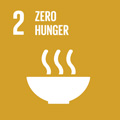- Docente: Maria Letizia Petroni
- Credits: 6
- SSD: MED/49
- Language: Italian
- Teaching Mode: In-person learning (entirely or partially)
- Campus: Rimini
- Corso: Second cycle degree programme (LM) in Human Nutrition, Well-Being And Health (cod. 5812)
-
from Oct 01, 2025 to Dec 17, 2025
Learning outcomes
The course covers the topics of pathophysiology of key non-communicable diseases and their dietary links with reference to the role of nutrition in both prevention and health protection.
Main learning outcomes are: understand and apply the main methodologies in nutritional epidemiology; examine both mechanistic and epidemiological evidence of the links between diet and major noncommunicable diseases (NCDs); understand the role of lifestyle factors—including diet, micronutrient status, processing level, and physical activity—in NCD prevention and management; comprehend and prevent malnutrition; develop a deeper understanding and ability to apply those dietary patterns with the most evidence-based effectiveness in terms of health promotion.
The aim of the Course is to provide students with the tools to translate scientific findings into healthy lifestyle, individual preventive nutrition plans, population interventions, and practical public health recommendations.
Course contents
Introduction.
The evolution of epidemiological studies on the relationship between diet and chronic degenerative diseases.
Research methods
- Techniques for surveying food consumption in the population: food-frequency questionnaires, food intake, diary, 7-day recall, 1-day recall.
- Methods for surveying energy expenditure in the population: doubly labeled water, accelerometers, heart rate monitoring, pedometers.
- Biomarkers
Foods: Risks and Health Claims
- Ultra-processed foods and microplastics: health risks
- Alcohol: health risks
- Adverse reactions to foods: mechanisms, prevention of complications
- Celiac disease: mechanisms, risk factors, dietary treatment, prevention of complications
- Health claims according to EFSA
Malnutrition
- Protein-calorie malnutrition: prevalence, risk factors, prevention
- Vitamin and mineral deficiencies: adverse health effects
Diet and chronic degenerative diseases
- Insulin resistance and metabolic syndrome: determinants in the development of type 2 diabetes, MASLD, metabolic nephropathy, dyslipidemia, hypertension; glycemic index and glycemic load.
- Obesity: etiology (outline), dietary risk factors, determinants, lifestyle interventions for primary and secondary prevention
- Type 2 diabetes: dietary risk factors, dietary patterns, lifestyle interventions
- Cardiovascular disease, hypertension, dyslipidemia: dietary risk factors, dietary patterns, lifestyle interventions
- Cancer: dietary risk factors, dietary patterns, and lifestyle interventions for primary and secondary prevention
- Sarcopenia and osteoporosis: risk factors, mechanisms, prevention and intervention strategies
- Neurodegenerative diseases: risk factors, mechanisms, prevention and intervention strategies
- Functional dyspepsia and functional bowel disease: risk factors, mechanisms, nutritional and nutraceutical intervention strategies (outline)
Healthy dietary patterns and their implementation
- Food systems, nutritional transition, sustainability, and inequalities
- Mediterranean diet
- Other dietary patterns: vegetarian, planetarian, DASH, Nordic
- Food pyramids
- Nutrition policies and population interventions (taxes, labels, guidelines) guide)
- Intervention planning: student presentations on campaigns or studies
Review and feedback
Readings/Bibliography
Sistema Nazionale delle Linee Guida. La dieta Mediterranea (2025)
Società Italiana di Nutrizione Umana (SINU). V revisione LARN - Livelli di Assunzione di Riferimento di Nutrienti ed energia per la popolazione italiana [Italian Recommended Dietary Allowances]
Liguri G, Stefani M. Nutrizione e Dietologia (2025) - Zanichelli (chapters 1, 2, 10-13, 15-17)
Teaching methods
The course is taught online via Microsoft Teams. Students are strongly encouraged to have their cameras turned on to allow active participation.
For some of the topics covered, peer education and flipped classroom methodologies will be used. Students, organized into pre-arranged groups, will discuss the topic in a virtual classroom, present key epidemiological studies related to the topic, and/or develop intervention plans.
Exercises using nutritional software are planned to help students to create personalized preventive nutritional plans.
Rapid classroom surveys will also be conducted during the lessons.
Lesson recordings will be made available on Panopto for students with recognized "student worker" or "student caregiver" status.
Assessment methods
For students attending at least 50% of the classes, assessment will be carried out through:
- Multiple-choice test (70% of the final grade)
- Evaluation of class assignments (30% of the final grade)
For non-attending students, assessment will be carried out through:
- Multiple-choice test (85% of the final grade)
- Video presentation (approximately 10-15 minutes) of major epidemiological studies or systematic reviews on one of the course topics, agreed upon with the instructor (15% of the final grade)
Teaching tools
Teaching materials (presentations with written text) prepared by the instructor and available in PDF format will be made available in the Virtual environment. These materials will be provided before and during the lecture, as well as articles from open-access scientific journals and other scientific materials.
Lecture recordings will be made available via the Panopto system (video lessons) for students with recognized "student worker" or "student caregiver" status, or for students with specific learning disabilities (SLD).
For students with SLD, other adaptations for both teaching and assessment are available, to be agreed upon with the instructor and the University services.
The course participates in the University's teaching innovation project.
Office hours
See the website of Maria Letizia Petroni
SDGs


This teaching activity contributes to the achievement of the Sustainable Development Goals of the UN 2030 Agenda.
